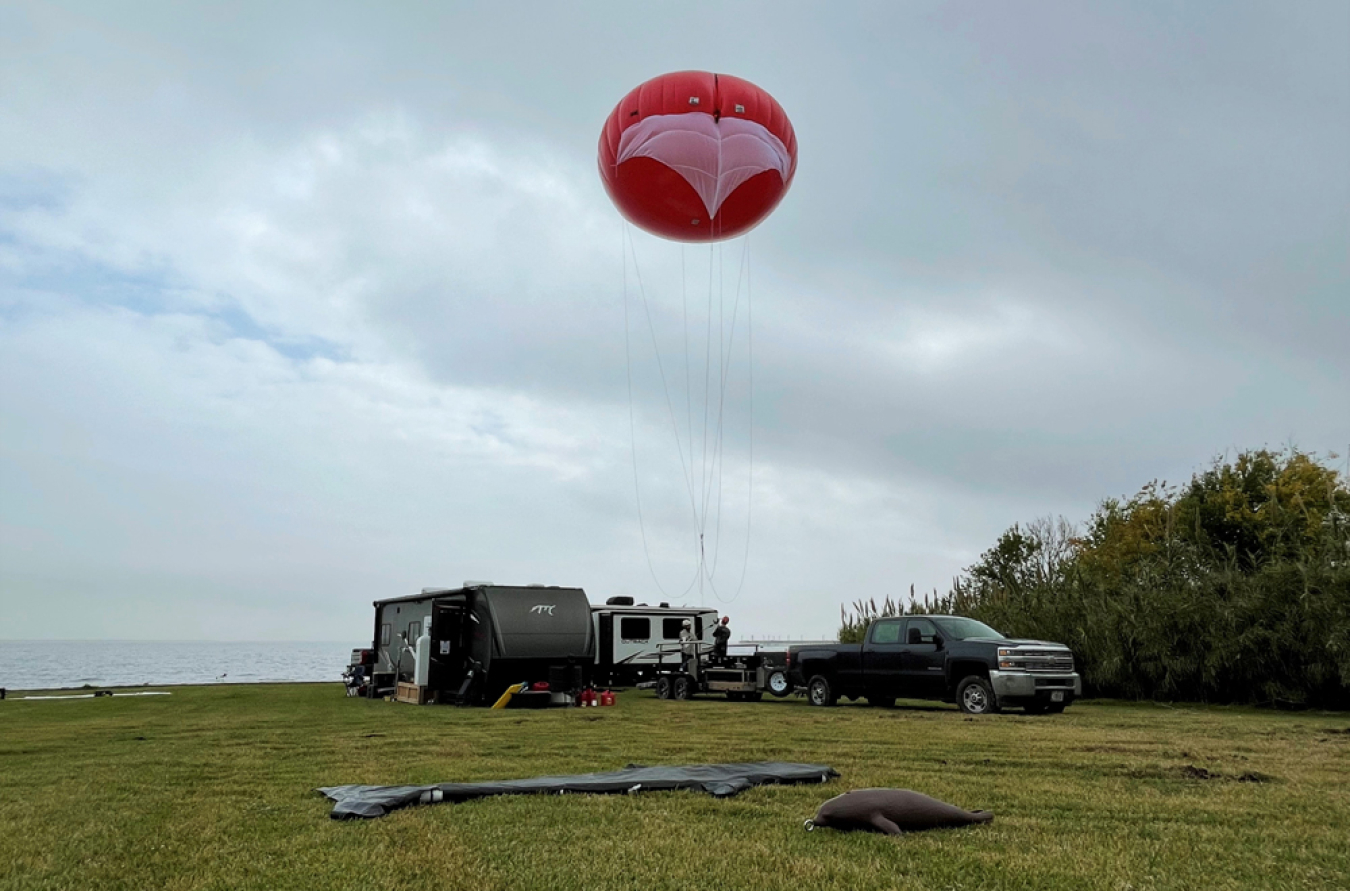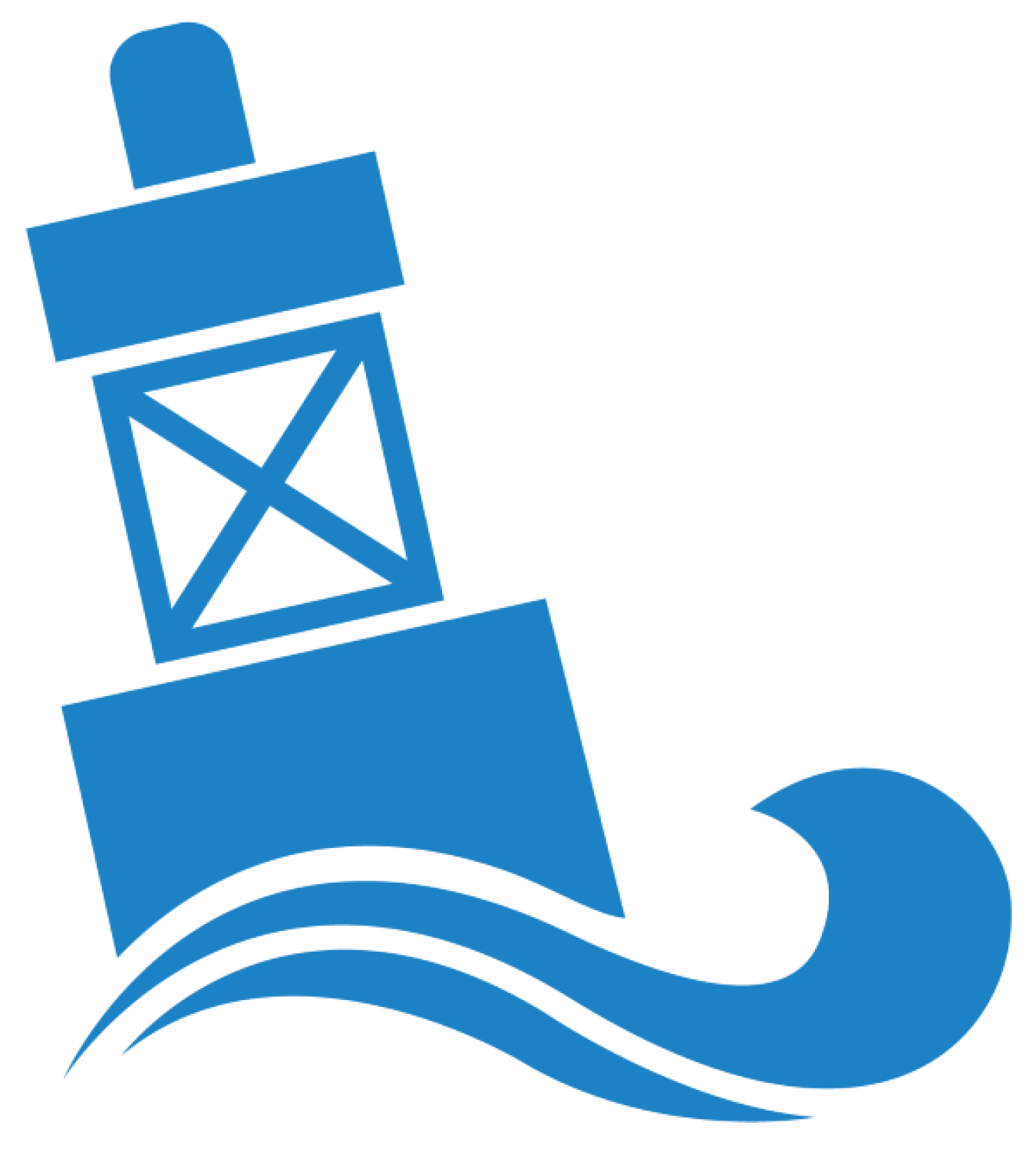The Triton Initiative developed and tested methodologies and tools to help researchers better understand and evaluate how environmental stressors related to marine energy technologies may impact marine wildlife.
Water Power Technologies Office
March 14, 2024Marine Energy Program
Reducing Barriers to Testing
Project Name: Triton Fieldwork
Project Team: Pacific Northwest National Laboratory (lead) and Sandia National Laboratories
Lead Recipient Location: Sequim, Washington

Throughout Fiscal Year 2023, the Triton Initiative validated innovative technologies and methods that can be used to track marine wildlife, addressed data gaps in underwater sound, and researched new ways to predict and potentially prevent fish collisions with underwater turbines.
In partnership with Sandia National Laboratories, the Marine Wildlife Detection and Tracking project team deployed and validated a tethered balloon system that can be used to advance capabilities for tracking and detecting the presence, absence, and displacement of marine mammals near marine energy sites. This aerial technology may aid researchers in overcoming the battery, payload, and flight limitations faced when using small unoccupied aerial systems, commonly referred to as drones. This project seeks to provide researchers with a new approach to address important questions about animal behavior in marine environments by lifting barriers that have stood in the way of marine energy testing and implementation.
The Triton team also worked to identify and address a large data gap around how acoustic particle motion may impact certain marine animals, like fish and invertebrates. Sound involves pressure and particle motion (in this case, the vibration of water molecules). Only marine mammals and a small number of fish species can detect sound pressure, but most invertebrates and all fish can detect particle motion. Further, many marine animals use sound to communicate and navigate and for other purposes. Understanding the impact of underwater noise on marine animals allows the marine energy sector to better recognize potential impacts from devices.

Two divers from the Triton Initiative fieldwork prepare to go below water to conduct tests.
The team worked with industry partners to develop and test a portable, battery-operated particle motion sensor to assess underwater noise comprehensively. This project helps researchers better characterize sound from marine energy devices, understand their effects on marine animals, and develop more effective monitoring methods and technologies for the marine energy industry.
To further advance underwater noise studies for the marine energy industry, the Triton team developed and tested various flow shields, which are devices that reduce the noise that could contaminate underwater sound measurements caused by the turbulence of water moving past a hydrophone (an underwater microphone used to detect and record sounds). To measure the performance of different flow shield designs, the Triton team developed and tested multiple types in a tidal channel in Sequim Bay, Washington, a high-energy natural environment. These studies inform practical underwater noise mitigation strategies that researchers and marine energy developers can use to improve underwater noise characterization at marine energy sites.

Tracking, detecting, and understanding the behavior of marine animals will be critical as the marine energy field continues to develop.
Triton's Integrated Collision Detection and Mitigation project conducts experiments to explore the capabilities and applications of strain gauges, which monitor the structural health of turbine blades, for reducing the risk of collision between animals and marine energy devices. The team repurposed the sensors found on strain gauges so they can be integrated into the blades of devices, like tidal and riverine turbines, to detect the presence of marine animals near a device. The gauges would then trigger the device’s control system to adjust the speed of the blades to permit an animal to pass through. As the project continues, the information it provides may help researchers implement additional collision risk mitigation strategies.
The Triton team also created the Probability of Encounter Model (POEM), which estimates the likelihood of fish encountering turbines during major movement or migration periods. POEM can help marine energy stakeholders determine what types of monitoring are needed prior to deploying a device.
Over the next year, the Triton Initiative will continue to test and research how stressors associated with marine energy devices can be measured, evaluated, accounted for, and mitigated.
-
 Researchers developed an environmentally acceptable lubricant to help increase the sustainability and durability of tidal turbines.
Researchers developed an environmentally acceptable lubricant to help increase the sustainability and durability of tidal turbines. -
 Construction on the PacWave South test facility continued in Fiscal Year 2023 with milestones that include progress in building a facility to distribute energy generated by devices tested while researchers collect data on those devices.
Construction on the PacWave South test facility continued in Fiscal Year 2023 with milestones that include progress in building a facility to distribute energy generated by devices tested while researchers collect data on those devices. -
 The Triton Initiative developed and tested methodologies and tools to help researchers better understand and evaluate how environmental stressors related to marine energy technologies may impact marine wildlife.
The Triton Initiative developed and tested methodologies and tools to help researchers better understand and evaluate how environmental stressors related to marine energy technologies may impact marine wildlife. -
 In Fiscal Year 2023, the Testing Expertise and Access for Marine Energy Research program surpassed $10 million of technical support across more than 100 marine energy projects since the program launched in May 2020.
In Fiscal Year 2023, the Testing Expertise and Access for Marine Energy Research program surpassed $10 million of technical support across more than 100 marine energy projects since the program launched in May 2020. -
 The National Renewable Energy Laboratory and Pacific Northwest National Laboratory installed and continued the construction of critical testing infrastructure that will help to advance research and testing of marine energy technologies.
The National Renewable Energy Laboratory and Pacific Northwest National Laboratory installed and continued the construction of critical testing infrastructure that will help to advance research and testing of marine energy technologies.
WPTO's marine energy e-newsletter shares news and updates on tools, analysis, and emerging technologies to advance marine energy.
The WPTO e-newsletter brings funding opportunities, events, publications, & hydropower and marine energy updates directly to your inbox.


